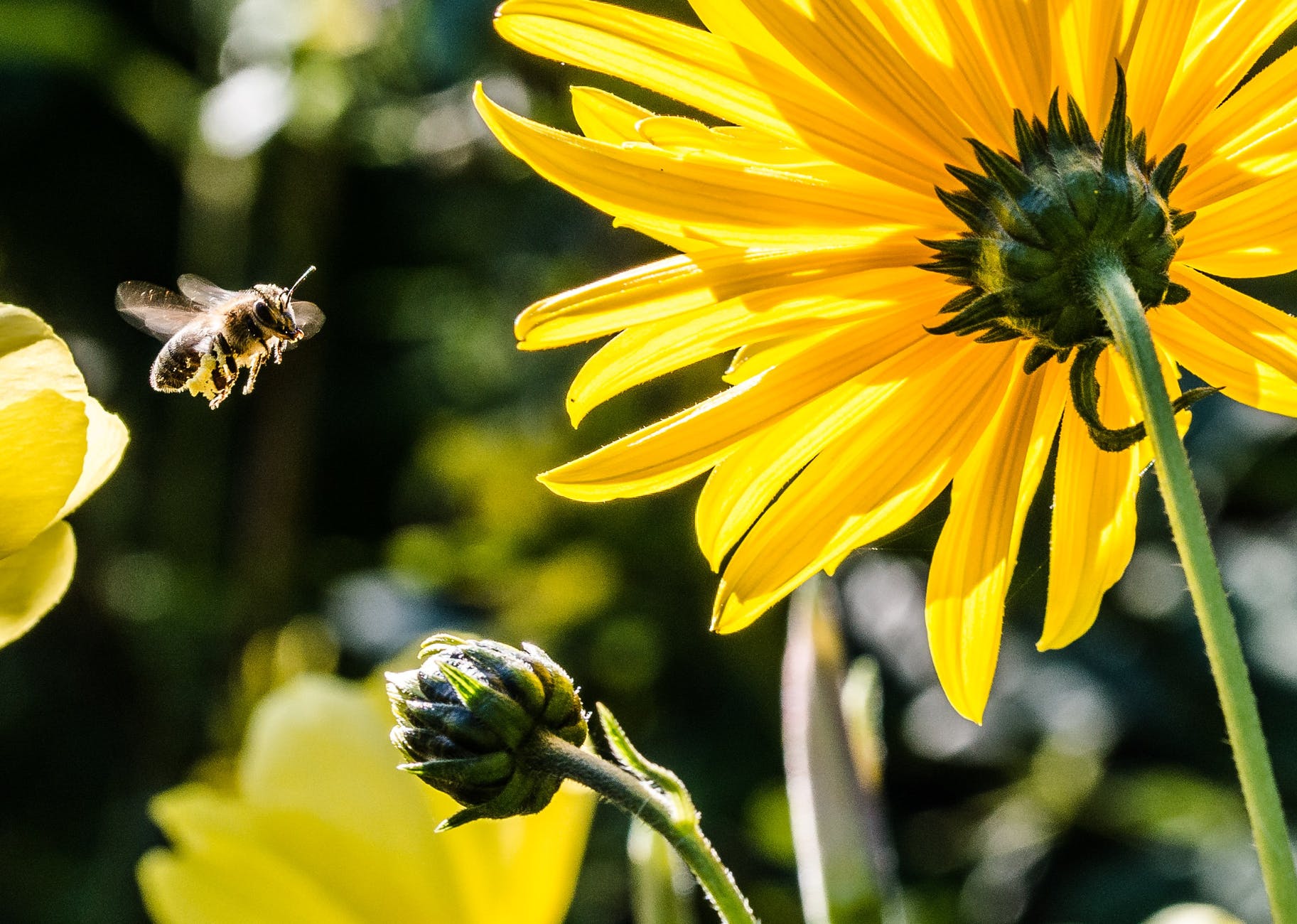
World Bee Day: Bee-ing Better
Bee-yond great
Almost 90% of wild plants and 75% of our most important crops globally depend on pollination by animals like bees. Wild bees are some of the most important pollinators because they pollinate plants on such a huge scale. Researchers have estimated that it would cost UK farmers £1.8 billion per year to pollinate their crops themselves if bees didn’t, and that’s presuming that they could get anywhere near the same results from manual pollination as they could from bees.
Did you know that some bees pollinate through vibration (sonification), which is called buzz pollination? Not all bees can do this – honey bees, for example, can’t – but there are lots of wild bees that can, and it is very difficult to recreate its effects. Bees that can buzz-pollinate include some species of bumblebees, large carpenter bees, mining bees, leafcutter bees, flower bees, and some other types of bees.
What’s more, there are a significant number of plants that have co-evolved to be pollinated most efficiently by buzz pollination, including aubergines, kiwis, potatoes, tomatoes, cranberries, and blueberries. For comparison, Honeybees are inefficient pollinators of blueberries and would have to make four times more visits than buzz-pollinating bees to transfer the same amount of pollen. While Honeybees can’t buzz-pollinate, they are essential for pollinating other plants, like almond trees. It’s important to remember that each type of bee tends to have its own niche and preferred plants for food, reproduction, and nesting. For example, Mason bees are excellent pollinators of fruit trees like cherry trees and it can be very beneficial to attract them to orchards.
Things you won’t bee-lieve
Often, the image conjured up by the word bee for most people is a velvety, fluffy, black and yellow striped little worker, often associated with ideas of hives and honey. In actual fact, there are over 20,000 species of bees, only 8 of which produce honey, and 90% of which are solitary. Plenty of these species are not black and yellow striped, and a lot of insects that people dismiss as flies are actually bees. Sadly, most people can only name a few types, so the awareness of what a bee actually is is pretty low.
At the most basic level of what a bee is, they have four wings, six legs, and five eyes. They have two wings on each side that hook together to form one larger pair of wings when flying, and they can unhook them when they are not flying. Their five eyes include three simple eyes on top of the head and two compound eyes on either side of the head, each made up of around 7000 facets or lenses. Some of these eyes are hairy, helping them to sense wind direction, and the eyes on the tops of their heads help them to navigate by the position of the sun.
Bees are also capable of some pretty impressive mental feats. For example, worker Honeybees can communicate with each other about where to find the best sources of food and how far away they are through an amazing kind of dance called the “waggle dance”, which took researchers more than two years to decode. Meanwhile, Bumblebees are able to calculate the most optimal routes between multiple locations, using experience as well as trial and error to learn and remember the best distances and directions between fruitful flowers.
What can we do bee supportive?
One of the key things we can do to help the decreasing bee population is to plant bee-friendly flowers, with farmers allocating areas of their land as bee-friendly habitats that provide nectar and pollen year-round. This improves agricultural yield, but also creates positive feedback loops of biodiversity that help keep soil rich and local animal populations stable. By planting the kinds of biodiverse flora that bees need for food, reproduction, and nesting, we attract more bees and other insects, which in turn attracts other creatures like birds, lizards, snakes, and frogs – depending on your area – and these then attract other, larger animals. We can also plant wildflowers and bee-friendly plants between existing bee-friendly areas to create B-Lines, like bee railways, that weave across the landscape and link up different areas so that bees can find the plants they need all over the country.
Stop using deadly and harmful pesticides. While most neonicotinoid pesticides that are directly responsible for killing bees have been banned across Europe since 2013, the UK government has just approved their emergency use for sugar beat crops. In response, Greenpeace has launched a petition asking the Environment Minister, George Eustice, to save bees, which you can sign here.
Bee hotels are also a great way to help solitary bee species in search of shelter, but it’s important to remember not to make the holes in your bee hotel too uniform, as different species are different sizes and need choice.
Learning more about bees generally is a fantastic way to help. By knowing more about why bees are struggling at the moment and which bees like which kinds of plants and areas, we put ourselves in a better position to take targeted, informed action with the most impact.
Recommended Posts

Rewilding: Revisiting the HOPE Anthology one year later
March 20, 2024

International Women’s Day: Why is it important to inspire the inclusion of women in climate change spaces?
March 8, 2024

How Colour Sends a Message: Colour Theory and Climate Communication
February 29, 2024

